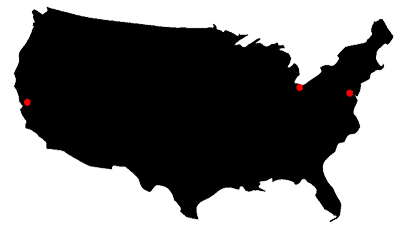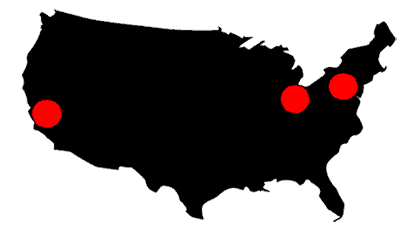Growth
Interaction Limit: Real-world constraints on digital platforms
Sangeet’s Key Note: While several factors determine the ability of a platform to enable an interaction, one of the factors is the real-world Interaction Limit for that particular interaction, as elaborated on by Devinder (guest writer) in the article below. This is specifically important for interactions where the exchange of goods and services occurs off the platform.
The Interaction Limit is the maximum geographical limit within which users from two sides of the platform would interact. The Interaction Limit for Uber may be a city. For Highlight, it may be the immediate vicinity. For Airbnb and Facebook, there isn’t any real Interaction Limit allowing for global network effects.
This is a guest post by Devinder Singh, founder of Xool.com. This post discusses Devinder’s experience with understanding and working around the constraints of the Interaction Boundary.

Xool, when it first launched, connected homeowners with contractors by providing instant estimates from various contractors. On Xool, most contractors would only take jobs within a short distance, around 15 miles. As it turns out, this was the Interaction Limit for Xool. Understanding the implications of this helped me change direction and better execute on Xool.
Interaction Limit
The Interaction Limit constrains the real-world area within which two users are likely to interact. A small interaction limit makes the number of potential users in a launch market really small. The shorter the limit, the more challenging it is to solve the dreaded chicken and egg problem.
The population density in the Northeast U.S. is around 350 per sq. mile, and let’s say our target customers comprise 10% of the general population. With a 15-mile interaction limit, this gives us 8,000 potential customers. Assuming 10% try the platform and less than 10% of that end up interacting, there may not be enough liquidity to drive interactions.

With a use case that has an interaction limit of 150 miles, the mathematics start working in our favor.

Consider the launch of a new online freelancer marketplace, where online writers can be hired to create content. There is no real interaction limit. Producers and consumers can be located anywhere. Liquidity ensues.
A local services marketplace, like TaskRabbit, on the other hand, may suffer from a low interaction limit and will need high liquidity within a short geographical distance to work. This also leads to market failure for the first contractor.
Small interaction limits may be remedied by launching in areas of high population density or high likelihood of interaction.
(Sangeet’s Note: I explore this in detail in the essays on launching in micro-markets here, here and here.)
Startups have also used big conferences for traction. Twitter did it with SXSW, and Uber did by providing free rides around tech conferences.
(Sangeet’s Note: This is, again, explored in detail in the essay here)
The concept of Interaction Limit is an important one and ties back to the fact that platforms are ultimately enabling the creation of new markets or re-intermediating existing ones.
Feel Free to Share
Download
Download Our Insights Pack!
- Get more insights into how companies apply platform strategies
- Get early access to implementation criteria
- Get the latest on macro trends and practical frameworks
Interaction Limit Issues
A small interaction limit leads to two challenges:
- Fewer interactions between consumers and producers
- Fewer traction channels and the need for geographically concentrated marketing
Smaller transaction limit creates a challenge with user on boarding as users only want to participate in interactions within a certain area and end up never moving to their first interaction. Imagine a marketplace to share residential snow blowing equipment. The need for the marketplace may be the same across most Northeastern U.S. cities, but the likelihood of interaction in Maine may be different from that in Delaware. This, in turn, affects the choice of launch market.
Small interaction limits also constrain traction channels. When marketing to people all over the country, there are many more channel options available. For smaller interaction limits, geo-targeted channels must be used.
The local nature of Xool’s interactions made the interaction limit a very important consideration while choosing initial marketing methods. Mechanisms like content marketing which would ordinarily be very effective sources of demand generation may not work when a small interaction limit forces focus on a targeted geography. It is, hence, important to consider the Interaction Limit while evaluating a new platform idea.
Sangeet’s Note: The concept of Interaction Limit is an important one and ties back to the fact that platforms are ultimately enabling the creation of new markets or re-intermediating existing ones. As a result, the success or failure of a new platform is heavily dependent on its ability to guarantee the creation of interactions in that market. There are several factors that go into guaranteeing market interactions. Interaction limit is just one of them. To understand some other factors that lead to guaranteeing market interactions or preventing market failure, check out the following essays:
How to incentivize producers on a content platform
How to piggyback Craigslist to avoid market failure
How To Make a Two-Sided Market One-Sided
State of the Platform Revolution
The State of the Platform Revolution report covers the key themes in the platform economy in the aftermath of the Covid-19 pandemic.
This annual report, based on Sangeet’s international best-selling book Platform Revolution, highlights the key themes shaping the future of value creation and power structures in the platform economy.
Themes covered in this report have been presented at multiple Fortune 500 board meetings, C-level conclaves, international summits, and policy roundtables.
Subscribe to Our Newsletter













